Curbside Classic: 1959 Ford Courier

Welcome to the Thursday edition of Curbside Classics. Tuesdays is for the big winners (and losers), the exceptional, the unexpected. Thursday will be for the more modest and prosaic finds. Any car a quarter century old or more still plying the streets of Eugene is worthy of our respect. Along with a helping of disdain, as needed. The 1959 Chevy Curbside Classic ignited lingering embers of the old Chevy vs. Ford (and Mopar) wars. My apologies to the younger readers who are probably bored to tears over this. I promise I’ve got something much newer and more voluptuous next Tuesday. But no less than geeber asked if a ’59 Ford could be the subject of the next CC. Be careful what you wish for, Fordophiles, because what I find sitting on the street is what you get. So here it is: a delectable Courier wagon. Now let the debate begin: was the ’59 Ford better looking than the Chevy?
I get to go first: No. And not just because of this particular specimen. Yes, the Chevy was garish and over the top, but lets face it, GM did that better than anyone, when they put their mind to it. The more successful ’59 and ’60 GM cars (not the ’59 Olds and Pontiac) simply reflected a higher quality of design skill. They manage to have an organic wholeness and a certain surface tension, despite the thematic excesses. And the details, for better or worse, are well executed. They really do manage to look like they’re floating on a cushion of air, and just about to lift off at the end of the driveway.
The ’59 Ford has one redeeming quality: the roof of the Galaxy Coupe. It looks exactly like the one they went back to using in ’62 and ’63, including the mid-size ’63 Fairlane Coupe. Good job! But outside of that, the ’59 Ford was atrocious, stylistically.
These Fords always looks like the original clay models got too hot and started shrinking and sagging. The whole greenhouse looks too small and narrow, and already partly melted into the body. And the lower body manages to look like its lacking structural integrity, sagging in the middle. And the whole car droops over its undersized undercarriage. Let’s just say that these Fords look very slow and earthbound, unlike the GMs’ tendency towards levity, of more than one kind.
The Ford’s proportions are off. And the front end is almost a dead ringer for the ’58 Chevy. That ridiculous tubular bulge running along the sides to the rear look like someone strapped on a couple of sewer pipes at Home Depot. They don’t work. At least GM and Chrysler fins go somewhere, they have a sweep or movement, and they resolve themselves at a point in space, literally. The Ford’s strap-ons go nowhere, except to clutter up a messy rear end.
Let’s sum it up this way: do you prefer over-the-top fins and jet engine intakes and exhausts, but well done in their execution; or conservative, boxy earth-bound semi-realism, done badly?
Shall we talk engines? If you’re a Ford man, probably not.
The six was a serviceable unit. But the Y block V8 was utterly obsolete one year after it appeared in 1954, thanks to Chevy’s revolutionary small black of 1955. A huge, hulking, heavy lump, it only managed to outdo the high-winding deep-breathing Chevy with more cubes and a slapped on belt-driven supercharger, which no one really bought anyway.
Ford knew it had an anchor on its hands, and had to spring quickly to bring out a whole new V8 generation, the FE. I know there’s a lot of FE lovers out there, but, with a few exceptions, they were stones. They just didn’t breathe, and were also heavy and inefficient. A well-running 283 Chevy could cream a 332 FE, and keep up with a 352. They made great truck engines, though: gobs of torque and hard to kill.
The new-in ’58 Cruise-O-Matic three-speed automatic was a tough and reasonably smooth beast, but had the lowest efficiency of the Big Three slushboxes. I read somewhere that the later C6 could suck up to sixty horsepower from the engine driving it. If true, there was probably a CJ 428 or a big-block Lincoln spinning the input shaft. But the C6 combined with the FE was a notorious gas hog.
Enough ragging on the big Fords of that era. I did like the ’63.5 fastback. And I was a sucker for ’61-’63 T-Birds, and liked the clean styling of the early Falcons. Not to mention the Lincolns. Ford’s strength in this period was its innovation in new niches: the ’58 T-Bird, Falcon, Fairlane, and Mustang. Look for them on Tuesdays. But their big cars generally left me stone cold; Thursday CC material, with a few exceptions. Your turn.

More by Paul Niedermeyer
Latest Car Reviews
Read moreLatest Product Reviews
Read moreRecent Comments
- ChristianWimmer This would be pretty cool - if it kept the cool front end of the standard/AMG G-Class models. The front ends of current Mercedes’ EVs just look lame.
- Master Baiter The new Model 3 Performance is actually tempting, in spite of the crappy ergonomics. 0-60 in under 3 seconds, which is faster than a C8 Corvette, plus it has a back seat and two trunks. And comparable in weight to a BMW M3.
- SCE to AUX The Commies have landed.
- Arthur Dailey The longest we have ever kept a car was 13 years for a Kia Rondo. Only ever had to perform routine 'wear and tear' maintenance. Brake jobs, tire replacements, fluids replacements (per mfg specs), battery replacement, etc. All in all it was an entirely positive ownership experience. The worst ownership experiences from oldest to newest were Ford, Chrysler and Hyundai.Neutral regarding GM, Honda, Nissan (two good, one not so good) and VW (3 good and 1 terrible). Experiences with other manufacturers were all too short to objectively comment on.
- MaintenanceCosts Two-speed transfer case and lockable differentials are essential for getting over the curb in Beverly Hills to park on the sidewalk.



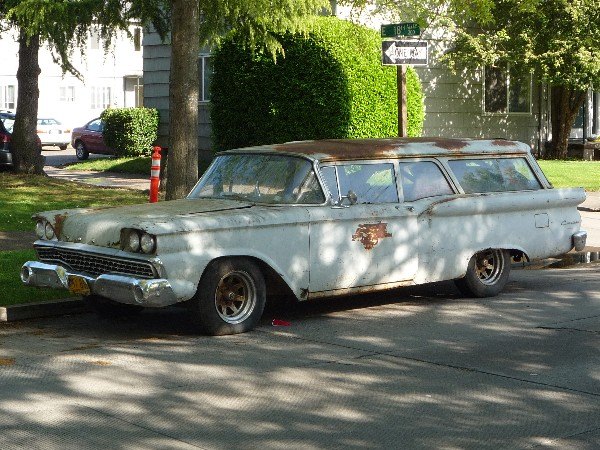


















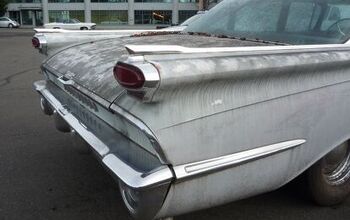

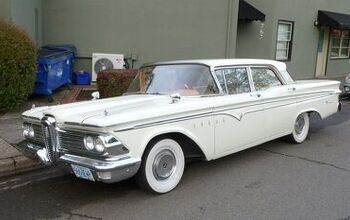
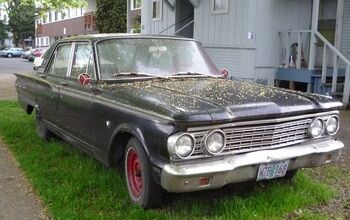
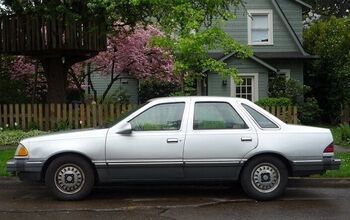










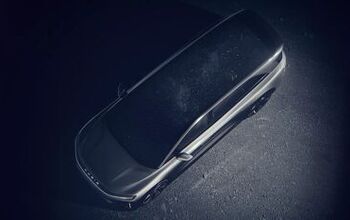
Comments
Join the conversation
You are right about late fifties,look at the roof lines on the Mopars. The stodgy '59 Ford out sold the Chevy.
I would repair that car to the point to where it was safe and reliable and drive it as-is. I wouldn't paint it right away, I'd drive it unrestored for at least a while before giving it a full restoration. What is the difference between the 2 door Ranch Wagon and the Courier?